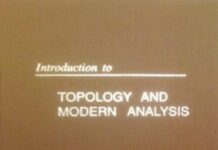
Ebook Info
- Published: 2007
- Number of pages: 372 pages
- Format: PDF
- File Size: 29.25 MB
- Authors: George F. Simmons
Description
The classic book – back in print! The first half of Calculus Gems is a biographical history of mathematics from the earliest times to the late nineteenth century. The author shows how science – and mathematics in particular – is something that people do, and not merely a mass of observed data and abstract theory. He demonstrates the profound connections that join mathematics to the history of philosophy and also to the broader intellectual and social history of Western civilization. The second half contains nuggets that Simmons has collected from number theory, geometry, science, etc., which he has used in his mathematics classes, meaning that it can be used as a supplement in a Calculus course, or a History of Mathematics course. The overall aim of this book is to answer the question, ‘What is mathematics for?’ and with its inevitable answer, ‘To delight the mind and help us understand the world.’
User’s Reviews
Editorial Reviews: Review This is a wonderful interdisciplinary source that makes connections among mathematics, humanities, social science, science, and philosophy. Appropriate for upper-division or graduate students or as as resource for secondary or or higher education mathematics or science teachers. –Jeanne Ramirez Mather, The Mathematics Teacher Book Description Demonstrates the profound connections that join mathematics to the history of philosophy. Book Description The classic book – back in print! Demonstrating the profound connections that join mathematics to the history of philosophy and of Western civilization, and containing nuggets collected from number theory, geometry, science, etc. We see the true purpose of mathematics – ‘To delight the mind and help us understand the world.’ About the Author George Simmons has the usual academic degrees (CalTech, Chicago, Yale), and taught at several colleges and universities before joining the faculty of Colorado College in 1962, where he is (was) Professor of Mathematics. He is also the author of Introduction to Topology and Modern Analysis (McGraw-Hill, 1963), Differential Equations with Applications and Historical Notes (McGraw-Hill, 1972, 2nd edition 1991), Precalculus Mathematics Mathematics in a Nutshell (Janson Publications, 1981); Wipf & Stock, Eugene, Orego at present), Calculus with Analytic Geometry (McGraw-Hill, 1985, 2nd edition 1996), and with Steven Kranta) Differential Equations: Theory, Technique, Practice (McGraw-Hill 2006). When not working or talking or eatiing or drinking or cooking, Professor Simmons is likely to be traveling (Western and Southern Europe, Turkey, Israel, Egypt, Russia, China, Southeast Asia), playing pocket billiards (pool), or reading (literature, history, biography and autobiography, science, and enough thrillers to achieve enjoyment without guilt). Read more
Reviews from Amazon users which were colected at the time this book was published on the website:
⭐I would use this book to better understand the history of mathematics and theory of various areas of mathematics developed by the famous mathematicians.
⭐Love this book… Had to buy other books by the same author.
⭐This is a wonderful overview of calculus and its history. I enjoyed reading this book immensely
⭐Lots of good calculus stuff to entertain and inspire
⭐George Simmons clearly loves his subject and can write well and clearly on it. He passionately believes that without an involvement in the histories of the main contributors towards the subject under discussion, a student cannot properly develop an appreciation for it. Hence his approach whereby he includes in his works brief descriptions of the lives of the great mathematicians from whom these blessings flow.This book arose from the historical notes he has made during the course of writing various of his other works on calculus and differential equations. These historical notes had grown sufficiently detailed and numerous that they have earned the right to be included in a book of their own.But this book holds more than merely the histories of the mathematicians. It also includes some satisfyingly deep mathematics, proved to an adequate level of completion — and that latter is not to be taken lightly.So many histories of mathematics fall short of actually including the proofs that underpin the work done by the mathematicians, on the specious grounds, supposedly, that people who study the history of mathematics are unable to do mathematics themselves (or they would do mathematics and not history). Simmons puts the lie to this. While the first part of this book is fascinating, and would be worth the five stars all on its own, the second half is an absolutely essential addition to every degree-level mathematician’s repertoire.The crux of the book is the work on cycloids, Kepler’s and Newton’s Laws, and Euler’s work on the summation of the reciprocals of the squares. These are clearly Simmons’s favourite subjects, as they have appeared in works of his elsewhere. His presentations are classics.The downsides of this work are not sufficient to require it to be marked down from its deserved five stars: the illustrations are not particularly good; much of the work has been recycled almost word-for-word from works dating back to 1972, and there are occasional mistakes — dates can be inaccurate. Also, one of the coefficients of the power series expansion of the tangent has been reported wrong (he has 67 / 2835 instead of 62 / 2835), but it is a credit to the book that the derivation of this is sufficiently complete as to allow students to discover this fact for themselves by actually performing the arithmetic. How exciting is that?Simmons explains his philosophy in the preface, and it includes this gem: “I hold the naive and logically impeccable view that there are only two kinds of students in our colleges and universities: those who are attracted to mathematics; and those who are not yet attracted, but might be.”.
⭐The “memorable mathematics” part of this book treats many interesting things. One is “a simple approach to E=Mc^2”. First we substitute the relativistic notion of mass m=m_0/sqrt(1-v^2/c^2) into F=ma=d/dt(mv) to get the relativistic F=ma, which is F=m_0a/(1-v^2/c^2)^(3/2). The work done by the force moving a particle from 0 to x is energy=integral from 0 to x of relativistic force=(change in mass)c^2.Another topic is rocket propulsion in outer space. Consider a rocket with no forces acting on it. Then mv is constant since d/dt(mv)=ma=F=0. The rocket moves forward by throwing out parts of its mass in the form of exhaust products with velocity -b relative to the ship. Since mv is constant we have mv at t=mv at t+dt, i.e. mv=(m+dm)(v+dv)+(-dm)(v-b), which reduces to dv=-b(dm/m) which we can integrate to get, e.g. the burnout velocity for given initial conditions b and fuel/m.But the best topics are two Euler classics. First the summation of the reciprocals of the squares. (sin x)/x has the roots pi, -pi, 2pi, -2pi, …, which suggests that the “infinite polynomial” (sin x)/x=1-x^2/3!+x^4/5!-x^6/6!+… should factor as (1-x^2/pi^2)(1-x^2/4pi^2)(1-x^2/9pi^2)… Multiplying this out and equating coefficients of x^2 we get 1/pi^2+1/4pi^2+1/9pi^2+…=1/3!, so the sum of the reciprocals of the squares is pi^2/6. Also, as a bonus, if we put x=pi/2 in the infinite product for (sin x)/x we get Wallis’s infinite product for pi.Euler’s study of the reciprocals of the squares also led him to the zeta function zeta(s)=1+1/2^s+1/3^s+…, which he saw can also be written as a product: sum over all integers of 1/n^s = product over all primes of 1/(1-1/p^s), as we see by expanding each factor on the right hand side as a geometric series and multiplying out the product, which gives the reciprocal of each possible product of primes, to the power s, exactly once, i.e., by unique prime factorisation, the left hand side. This charming formula immediately pays off by yeilding a new proof of the old theorem that there are infinitely many primes: because zeta(1)=1+1/2+1/3+…=infinity we have also zeta(1) = product over all primes of 1/(1-1/p) = infinity, which is clearly possible only if there are infinitely many primes.
⭐This is a terrific book for anyone who is fascinated by the workings of great minds. In the first half of the book, Mr Simmons takes us through the lives of 33 of the most notable mathematicians on history, from pre-Archimedes, to the late 19th century. These are wonderful stories of great thinkers, and, to my relief, Mr. Simmons walks us through derivations of many famous formulas and discoveries. Do not fear that this is all calculus–much of the book is brilliant algebra, geometry, and number theory, and fully comprehendable by anyone with a good non-calculus high school education. But tasty calculus delights abound for those who are up to the challenge. The second half of the book, called Memorable Mathematics, are proofs and insights into some of the most wonderful discoveries of pre-twentieth century Mathematics. Topics include primes, irrational numbers, perfect numbers, proofs of infinite series involving e and pi, and a marvelous treatise on the cycloid and brachistochrone problems. Interspersed are interesting anecdotes about these great thinkers, including Newton, Euler, the Bernoulli Brothers, and Leibniz, just to name a few.I loved this book, even though I am not a mathematician by profession. The best part about it is that not only are these famous formulas presented, but most are also proven, which goes along way in showing just how amazingly the brilliant minds of these historical geniuses work.
Keywords
Free Download Calculus Gems: Brief Lives and Memorable Mathematics (Spectrum) 1st Edition in PDF format
Calculus Gems: Brief Lives and Memorable Mathematics (Spectrum) 1st Edition PDF Free Download
Download Calculus Gems: Brief Lives and Memorable Mathematics (Spectrum) 1st Edition 2007 PDF Free
Calculus Gems: Brief Lives and Memorable Mathematics (Spectrum) 1st Edition 2007 PDF Free Download
Download Calculus Gems: Brief Lives and Memorable Mathematics (Spectrum) 1st Edition PDF
Free Download Ebook Calculus Gems: Brief Lives and Memorable Mathematics (Spectrum) 1st Edition

